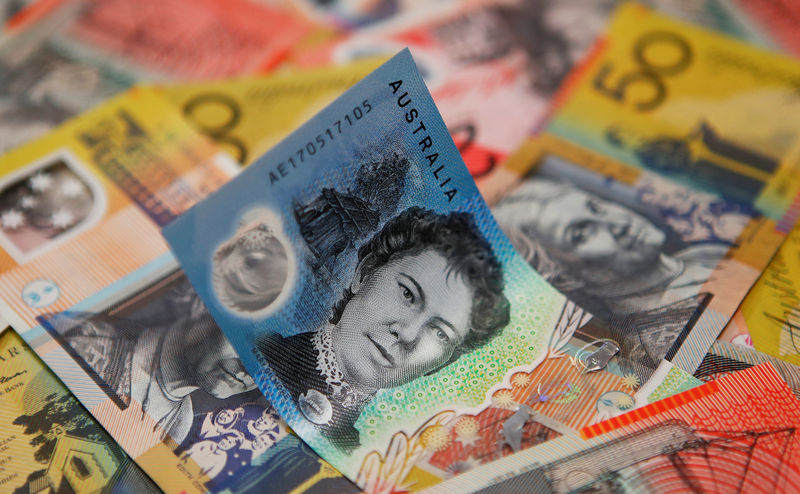Investing.com – Investors should look at buying the Australian dollar, according to HSBC, as the currency enjoys three crucial tailwinds.
The first, and probably most important, factor that will likely support the dollar is policy support from China, analysts at HSBC said, in a note dated Oct. 9.
China optimism helped lift the AUD in late September via the financial market channel (i.e. risk appetite, Australia’s terms of trade, and its interest rate outlook to a lesser degree), said HSBC, but AUD/USD’s performance fell well short of matching this optimism.
Markets appear to be casting doubt on whether the positive sentiment can be matched by actual economic benefits, most importantly higher steel demand.
That said, the recent stimulus announcements were significant, and we believe what matters most for the AUD is not the immediate size or effectiveness of the policy measures, but the “policy put” co-ordinated across fiscal and monetary authorities, the bank added.
“In an environment in which bad news could bring more forceful policy support, we prefer to position for the AUD to rebound on China-related sell-offs, unless the “policy put” fades,” HSBC said.
“The eventual size of AUD upside hinges on whether policy measures can re-energize China’s economy.”
Secondly, there is a growing easing bias among major central banks, which should see global financial conditions become more supportive for risky assets. This also stands in contrast to the RBA’s “restrictive-for-longer” stance, which may still be undersubscribed by markets.
Therefore, we think the AUD could be supported via both risk sentiment and relative rates channels over time.
Finally, the Aussie dollar simply looks cheap.
“Besides its undervaluation versus our China sentiment gauge, AUD-USD also screens cheap based on our models, when taking key drivers into account,” the bank added.
However, trading a positive AUD stance could be tricky in the near term. Fed repricing, potential geopolitical escalation, and US election risks may dampen the AUD’s performance versus safe-haven currencies, particularly the USD, in the near term.
Instead, we prefer to stay relatively risk-neutral and position for AUD outperformance against other cyclical currencies with a lower beta to China’s growth; a strengthening central bank easing bias compared to the RBA; and a less favourable terms of trade dynamic.
“Therefore, we think the AUD looks attractive on dips against the EUR, GBP and NZD,” HSBC added.


